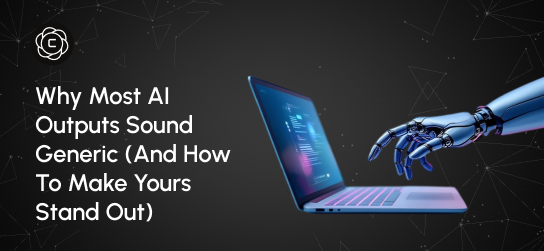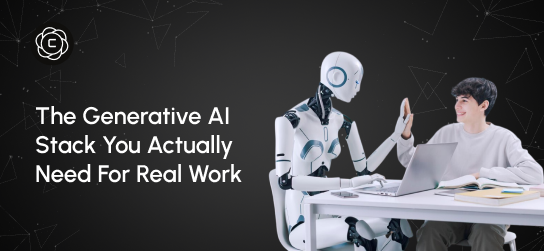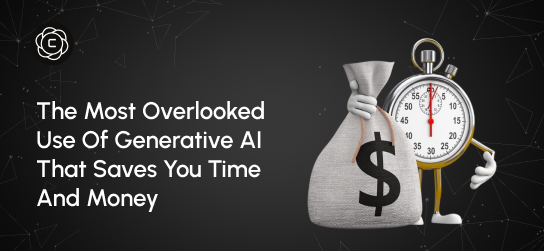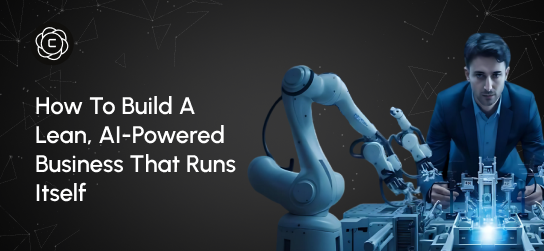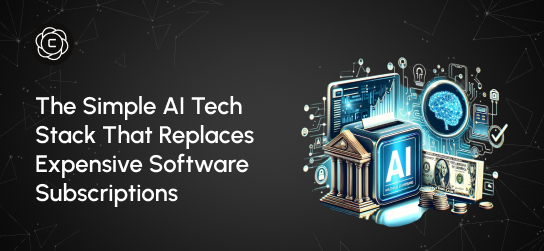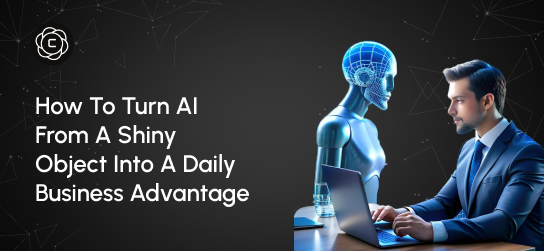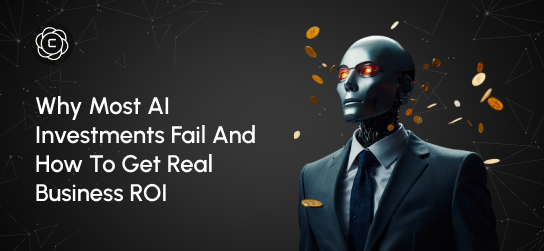Learning Center
Master AI creativity with our comprehensive guides, tutorials, and expert insights. From beginner basics to advanced techniques.
How to Build Your AI-Powered Second Brain (And Finally Stay Organized)

Introduction
My desktop used to feel like a hostage situation. Thirty-seven tabs blinking for attention. Notes scattered across seventeen apps like digital graffiti. Files named “Important_Final_REALLYFINAL_v3” buried in every corner. I wasn’t working, I was wading through wreckage.
It all cracked during a client call. I spent ten humiliating minutes searching for a doc I’d literally written the day before. I knew it was there. I could picture it. But in the chaos of apps, folders, and tools, it might as well have been lost in a black hole.
That’s when it hit me, information wasn’t the problem. The system was. I was using a framework built for dial-up days to manage a world that moves at AI speed. What I needed wasn’t more storage. I needed a thinking partner.
So I built one. An AI-powered second brain. Not to sort files but to clarify thought. It doesn’t just store what I write. It helps me see how it all connects. Now, instead of scavenging through noise, I surface what matters in seconds.
Why Traditional Organization Systems Fail
Most productivity advice treats information like a paper problem: just make more folders, name things properly, and keep everything neatly filed. That might’ve worked in a world where you handled ten documents a week—not hundreds a day.
But modern work moves differently. You’re juggling emails, notes, articles, screenshots, videos, voice memos, dozens of fragments every hour. No static system can keep up with that velocity.
And even if you organize it “perfectly,” good luck decoding your own logic six months later. What felt intuitive in January becomes a riddle by July.
That’s the real issue: old systems treat information like dead weight, files to store, when in reality, it’s living knowledge. Messy. Evolving. Interconnected.
Your brain doesn’t think in folders. It thinks in links. Patterns. Associations.
An effective second brain doesn’t force structure.
It reflects how you actually think; fluid, contextual, alive.
What Makes an AI-Powered Second Brain Different
AI changes the way we handle information, not by storing more, but by understanding what it all means. You don’t have to memorize folder paths or file names; you just describe what you need, and it brings it forward.
Because it grasps context, AI can surface connections across time, tools, and tasks. A strategy you wrote last quarter might reappear when it fits today’s project, even if you’d forgotten it existed.
Natural language search frees you from rigid labels. Type “client feedback on pricing,” and the system pulls up what matters, even if the original file name was vague or misfiled.
Summarization lets you process content without wading through it all. Long reports, meeting transcripts, saved articles, all distilled into what’s essential, so you stay focused on what’s next.
It doesn’t stop there. AI recognizes patterns across your notes, highlighting recurring themes and helping you notice insights you wouldn’t catch on your own.
The document summarizer shows how this works in real time. Instead of scanning every note or tab, you get clear takeaways—shaped to support what you're thinking through right now.
The Five Pillars of an Effective Second Brain
After working with dozens of professionals to build AI-powered information systems, we’ve seen five consistent elements that determine whether the system thrives or breaks down.
Capture Systems are built to keep up with the pace of modern work. Instead of forcing you to stop and organize everything upfront, a good capture layer grabs what matters quickly, then sorts it later with minimal friction.
Connection Intelligence allows your system to spot links between information that would otherwise stay isolated. It might tie a customer’s message to earlier meeting notes or match saved research with your current draft-in-progress.
Retrieval Efficiency means you can access information the moment you need it, even if you don’t remember where it lives. Tools like natural language search and contextual recommendations reduce the need for perfect memory or labels.
Synthesis Capabilities give your system the power to generate new ideas by combining inputs across formats. This isn’t just storage, it’s about enabling insight, creativity, and strategic thinking.
Evolution Mechanisms allow your second brain to get smarter as you use it. Over time, it learns your workflow, adapts to your habits, and makes better decisions, turning the system into a true thinking partner.
Building Your Capture Infrastructure
At the core of every second brain is fast, effortless capture. If saving an idea takes more than ten seconds, you’ll hesitate, and those small delays lead to big losses over time.
Begin with a single capture tool that works across your devices and platforms. Whether it’s a notes app, voice recorder, or AI assistant, it needs to handle different input types without slowing you down.
A personal assistant AI can serve as your universal input funnel. It accepts voice memos, screenshots, short notes, or even forwarded emails, then sorts and tags them using content and context.
To make capturing second nature, align it with how you already work. If your best ideas hit while walking, use voice. If insights come while reading, set up a screenshot shortcut. If meetings are where clarity strikes, build a note-taking system that doesn’t interrupt your focus.
Set up triggers to catch key types of content. That might mean forwarding specific emails, bookmarking research, or using save tools to clip insights from articles or social media.
Don’t stress about organizing everything perfectly at the start. The real win is capturing consistently. With AI, structure can be added later but only if the raw material is there to begin with.
Smart Organization That Actually Works
Ditch traditional folder hierarchies. AI-powered organization relies on tags, associations, and contextual links that align with how the brain naturally processes and recalls information.
Use broad, flexible categories like “Projects,” “Resources,” “Ideas,” and “Archive” to avoid overthinking where something belongs. This reduces friction and prevents hesitation when saving new material.
Let AI manage the fine details. Modern tools can tag entries, surface recurring themes, and build connections automatically, freeing you from constant sorting and filing.
Sentiment analysis adds another layer, grouping content by emotional tone. This makes it easier to revisit motivating ideas or critique-heavy research depending on what mindset you need.
Use project-based views to gather everything related to a topic, no matter where it was stored. This adaptive organization keeps your focus on the work at hand, not on retracing your past structure.
Layer in time-based views to preserve chronology while keeping topics accessible. Whether you're searching for last month’s client call or earlier research on productivity, both should be equally easy to locate.
The Retrieval Revolution
Even the best capture and organization systems fall apart if you can’t retrieve information when it matters. AI-powered retrieval shifts the experience from memory recall to contextual discovery—making access smarter, faster, and more intuitive.
Natural language queries outperform traditional keyword searches when dealing with complexity. Instead of recalling exact words, you describe what you need, and AI understands your intent—pulling the most relevant information accordingly.
Context-aware recommendations enhance focus by surfacing related content based on your current task. If you're drafting a proposal, the system might suggest past projects, supporting research, or helpful templates—without needing to search.
Cross-referencing adds another layer by connecting useful material that wasn’t originally tied to your current work. AI can draw insights from unrelated documents and bring them into the right moment.
Timeline-based retrieval helps you navigate your information chronologically. If you ask, “What was I reading before the Johnson project?” AI can return that slice of context, even if you forgot what it was called.
Tools like the research paper summarizer make this even easier by extracting key points from old material, so you can bring past insights forward without digging through every document again.
Synthesis: Where Magic Happens
The real power of a second brain isn’t in storing or retrieving information—it’s in synthesis. The ability to bring together ideas from different places to generate new insights is where real leverage begins.
AI makes this possible by detecting patterns across your data that you’d never catch manually. It might surface repeated themes in client feedback, shared obstacles across past projects, or signals pointing to industry shifts before they’re obvious.
Connection mapping tools reveal how seemingly unrelated pieces of information link together, opening space for creative strategies and unconventional thinking that wouldn’t emerge from isolated review.
Content merging tools help you combine inputs into coherent, usable formats, whether you’re drafting a proposal, writing a report, or shaping a presentation. Instead of starting from scratch, you’re refining a living system of ideas.
Gap analysis reveals what’s missing and directs your focus where it matters.
Tools like the AI literature review assistant showcase this capability by pulling together diverse materials into cohesive overviews, supporting deeper understanding and smarter decisions.
Advanced Techniques for Power Users
Once your foundational second brain is running smoothly, advanced techniques can take its value to another level—amplifying what you already have and unlocking deeper capabilities.
Automated content curation ensures a steady flow of relevant information from trusted sources. This could include curated feeds from industry journals, expert newsletters, or specialized research databases, delivered directly into your system.
Cross-project knowledge transfer lets insights travel between unrelated areas. AI can detect when solutions from older work might apply to current challenges, helping you repurpose knowledge instead of reinventing it.
Predictive tools surface the right information before you even ask. Based on patterns in your workflow, your system can surface helpful material in advance, keeping you a step ahead without added effort.
Collaborative knowledge sharing enables teams to exchange insights without losing personal structure. Each person keeps their own system, but still taps into the shared brainpower of the group.
Performance analytics help you track which types of information deliver the most value over time. This lets you refine your capture habits and prioritize high-impact sources as your system evolves.
Common Implementation Mistakes
Most people treat their second brain like a digital junk drawer, organized in theory, chaotic in practice, and abandoned once the mess outweighs the value.
Trying to organize everything upfront can slow you down before you even begin. It’s more effective to start with broad categories and let AI refine the structure as your habits develop.
Being overly selective about what you capture leads to hesitation. It’s better to save freely at first, then let AI surface what’s useful as patterns begin to emerge.
Migrating your entire archive in one go is a recipe for burnout. Instead, focus on capturing new information now and pull in older material only as needed.
Expecting instant results ignores the learning process. Building a second brain requires time, for both habit formation and the system to start working the way you need it to.
Using too many platforms undermines cohesion. Choose one central system and commit to it long enough to see its long-term benefits take hold.
Measuring Your Second Brain Success
To know if your second brain is truly working, track metrics that reflect deeper thinking and productivity—not just cleaner folders.
Retrieval time should drop as the system matures. Monitor how long it takes to locate information you’re certain you’ve already saved.
Insight frequency reveals whether your system is sparking new ideas or simply storing old ones. A good second brain helps you connect dots, not just archive them.
Faster decision-making is another sign of progress. With quicker access to relevant context and past analysis, you can make choices with greater speed and clarity.
Improved project completion rates often follow. When you’re building on past work instead of starting from scratch, momentum grows and execution gets easier.
Reduced stress during high-cognitive-load tasks signals trust in your system. When you know your ideas are captured and retrievable, you can think more clearly and work more confidently.
Your Implementation Action Plan
Week 1: Choose your main AI platform and build simple capture workflows. Don’t worry about structure yet, just focus on getting ideas into the system.
Week 2: Create capture habits that align with how you already work. Start small—maybe just meeting notes or saved articles, then expand as it becomes second nature.
Week 3: Explore how your system handles natural language queries and auto-organization. Learn how it understands your intent not just your keywords.
Week 4: Start using synthesis tools to blend insights from multiple sources. This is the shift—from storage to real cognitive leverage.
For broader application, The Fastest Way to Organize Your Life Using AI outlines how to extend this system beyond note-taking into full-spectrum life design.
The Long-Term Vision
Your second brain isn’t just about storage. It’s about thinking better, now, and exponentially more in the future. As AI advances, so will your system’s ability to analyze, connect, and synthesize, becoming a true extension of your mind. Not just organizing ideas, but amplifying your capacity to generate them.
Each insight you capture today becomes a compounding asset for tomorrow.
Over time, this creates an unfair advantage: faster thinking, deeper clarity, smarter decisions.
This isn’t just a productivity hack. It’s not just a tool, it’s a commitment to your future clarity in a world that never stops throwing information at you.
The people building second brains today? They’ll be the ones shaping the future tomorrow.
Table of Content
- Introduction
- Why Traditional Organization Systems Fail
- What Makes an AI-Powered Second Brain Different
- The Five Pillars of an Effective Second Brain
- Building Your Capture Infrastructure
- Smart Organization That Actually Works
- The Retrieval Revolution
- Synthesis: Where Magic Happens
- Advanced Techniques for Power Users
- Common Implementation Mistakes
- Measuring Your Second Brain Success
- Your Implementation Action Plan
- The Long-Term Vision
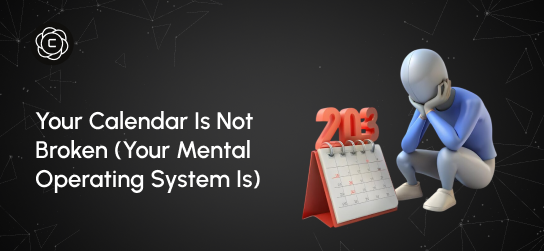
Your Calendar Is Not Broken (Your Mental Operating System Is)
Last month, I watched a founder spend three hours reorganizing his calendar app for the fourth time this year. Different colors, new categories, smarter blocking strategies. By week two, he was back to the same chaotic pattern: overcommitted, constantly running late, and feeling like his day controlled him instead of the other way around. The problem wasn't his calendar. It was the mental operating system running underneath it. Calendar issues aren’t about tools; they’re about how you think about time. They download new apps, try productivity methods, and wonder why nothing sticks. Meanwhile, the real issue sits in how their brain processes time, priorities, and commitments.
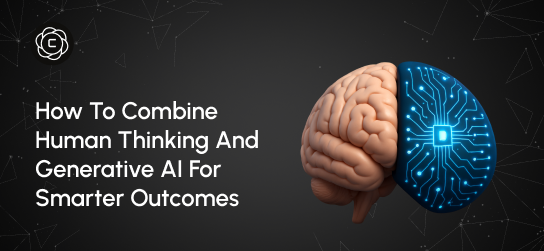
How to Combine Human Thinking and Generative AI for Smarter Outcomes
Last Tuesday, I watched two product managers go head-to-head on the same challenge. Same tools. Same data. Same deadline. But the way they used AI couldn’t have been more different and the results made that difference unmistakable. One delivered a generic solution, familiar and easily replicated. The other crafted a proposal that felt thoughtful, grounded, and strategically distinct. Their CEO approved it for implementation within minutes. The gap wasn’t technical skill or AI proficiency. It was their thinking architecture, the way they framed the problem, used AI to explore, and layered in human context to guide the output.
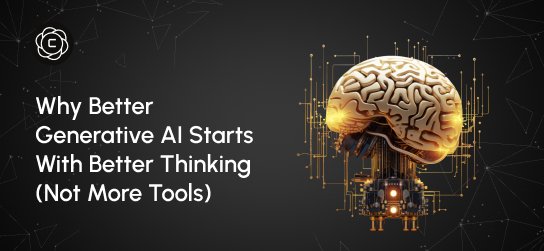
Why Better Generative AI Starts With Better Thinking (Not More Tools)
Four months ago, I watched a marketing director spend $400 on AI subscriptions only to produce the same mediocre content she'd always created. Her problem wasn't the tools. It was her approach. This scenario plays out everywhere. Professionals accumulate AI subscriptions like digital trophies, believing more tools equal better results. They're missing the fundamental truth: generative AI amplifies your thinking, not replaces it. The best AI users I know don't have the most tools. They have the clearest thinking processes.
Stay Updated
Get the latest AI insights, tutorials, and feature updates delivered to your inbox.
